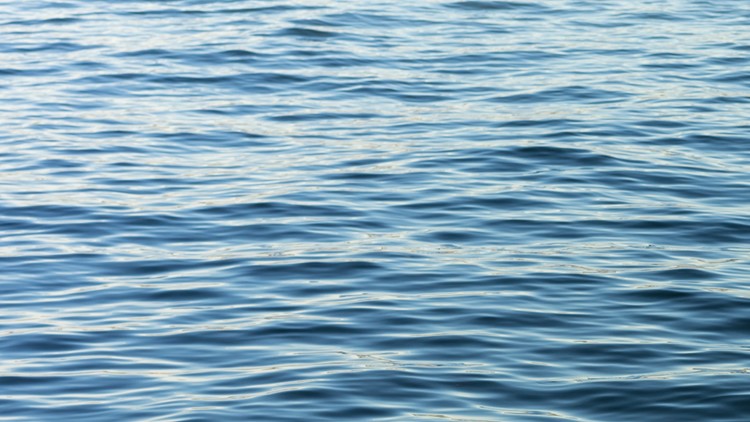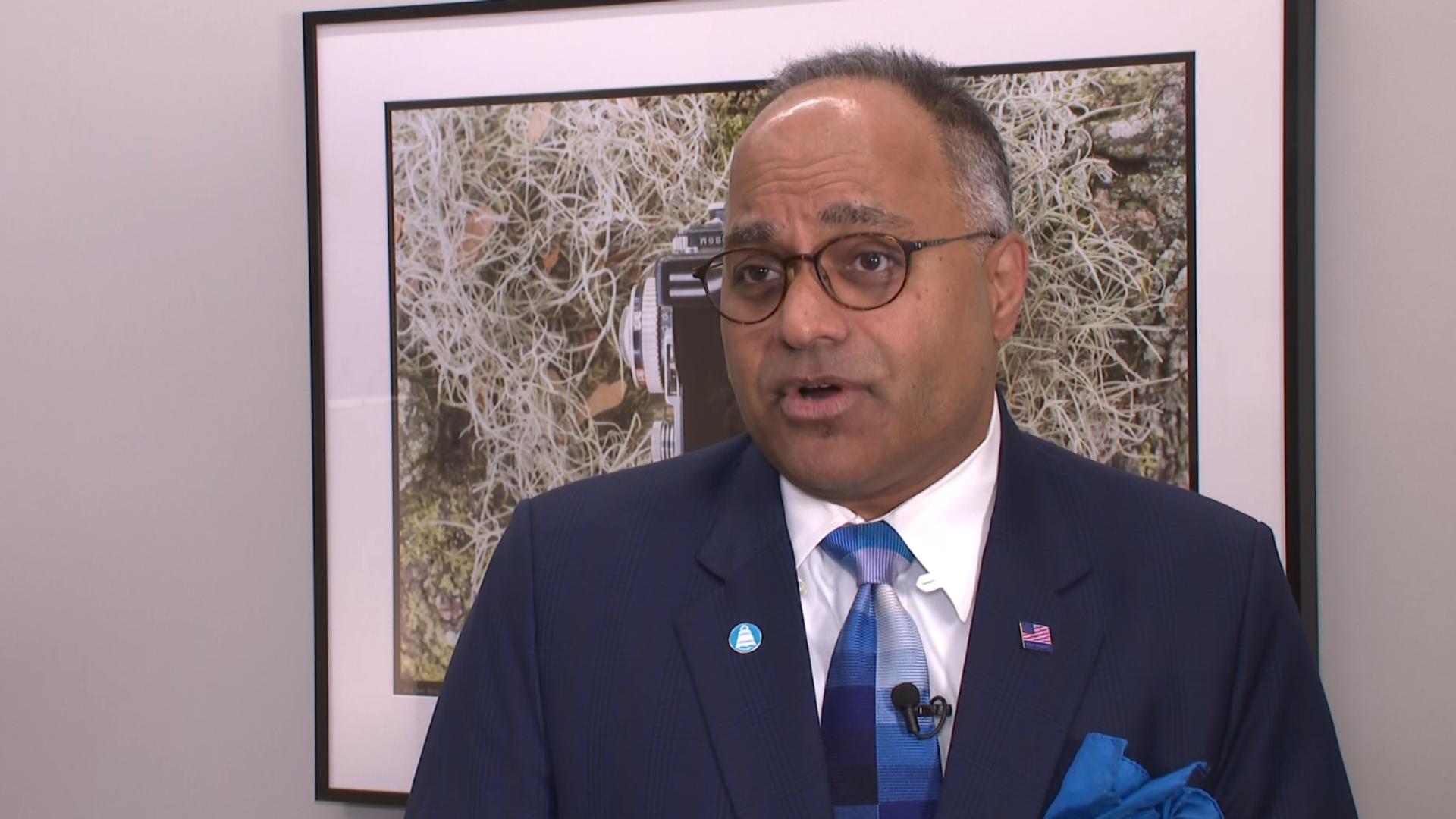CLEVELAND — A public advisory has been posted at Edgewater Beach in Cleveland after a combined sewage / stormwater overflow impacted the area Monday night.
The overflow into Lake Erie happened amid heavy rain, according to the Northeast Ohio Regional Sewer District, exceeding the 25-year capacity of the sewer system.
The last overflow event happened earlier this month on Aug. 8.
“Visitors, particularly children, the elderly and those in ill health, are advised to avoid contact with the water and woody debris,” according to NORSD.
That advisory remains in effect until further notice.
Starting Tuesday, crews will sample the water twice each day – once in the morning and again in the afternoon – at 10 locations along Edgewater Beach until the situation clears.
“Those samples will be tested to determine if E. coli bacteria levels are elevated,” NORSD officials noted in a press release. “Results will be available 24 hours after the sample is collected. Once the samples are below the Federal and State advisory standards of 235, which is colony forming units of E. coli per 100 milliliters of water, the advisory will be lifted.”
For more on the history of overflow incidents, NORSD provided the following background information:
Improvements to the Edgewater Sewer System
Built in the late 1880s, the combined sewer outfall at Edgewater discharged a mixture of sewage and stormwater into Lake Erie approximately 40 to 50 times per year through the mid-1970s. Since its inception in 1972, the Sewer District has invested $5 billion in sewer and stormwater projects across the entire service area. Early work included improving and building infrastructure, like the Northwest Interceptor, resulting in combined sewer overflow discharges at Edgewater significantly decreasing to, on average, once a year.
Over the past 5 years, the discharges have been more frequent. In 2020, the Edgewater outfall discharged four times, the last event that year occurring on October 21. As a result of work last year, upgrades to the Northwest Interceptor will likely reduce the volume and frequency of Edgewater discharges that typically would occur during and up to a 25-year storm event, which equals 3.16 inches of rain in a 6-hour period and, based on historical rain data, occurs every 25 years.
“There have been 11 storms over the last 5 years that caused overflows at Edgewater Beach. They ranged from a 5-year storm event to nearly a 25-year storm event,’ said Doug Lopata, Sewer District Program Manager. ‘While it’s not cost effective to completely remove the outfall, we aggressively searched for opportunities to improve the function of the sewer system connected to the CSO, so that we could reduce overflows, and we found better ways to manage flows within the Northwest Interceptor system.’
The Edgewater portion of the Northwest Interceptor begins at W. 117th and ends at the Westerly Wastewater Treatment Plant located by the Edgewater Marina, collecting sewage from homes and businesses on the westside of Cleveland. As part of the improvements, the Sewer District removed three inflatable dams in the interceptor and provided improved ventilation, reducing pressure within the sewer pipe. Additionally, the Sewer District sealed an access cover near the beach and raised the overflow gate control elevation, allowing more combined sewage to be directed to the Westerly Wastewater Treatment Plant for treatment rather than discharging into the environment. These improvements raise the level of control at the Edgewater combined sewer outfall.
‘With the Westerly Plant and Northwest Interceptor improvements in place, the inflatable dams acted as unnecessary stop signs in the sewer system. They held back the combined sewage and, when finally deflated, allowed combined sewage to gush rapidly through the system, triggering the overflow gate to open,’ said Lopata. ‘By eliminating the dams, it allows the flow of untreated water to move less rapidly and more consistently through the pipe.’
In addition to upgrades, the Sewer District researched opportunities to eliminate the Edgewater outfall from the beach.
‘The Edgewater overflow serves as a last resort release point during heavy rains, protecting homes and the Westerly Wastewater Treatment Plant from flooding, so we knew it wasn’t practical to remove it,’ said Kyle Dreyfuss-Wells, Sewer District CEO. ‘However, we explored options, including relocating the outfall approximately 2000 feet into Lake Erie. This option does nothing for water quality, while costing customers more than $30 million to build. Since there would be no water quality benefit, we determined that would not be a wise investment of our customers’ dollars.’’
Eliminating Other Combined Sewer Overflows in the Region
One of the Sewer District’s largest capital expenditures is Project Clean Lake, a $3 billion, 25-year infrastructure investment program to address combined sewer overflows. Existing in nearly 800 cities, including Cleveland, Columbus, Akron and Cincinnati, combined sewers were once a state-of-the-art system to manage waste, and must now be addressed, so that the volume of pollution entering waterways can be reduced. In the Sewer District’s service area, CSO discharge points are in Cleveland and inner ring suburbs, including Garfield Heights, Maple Heights, Brooklyn, and East Cleveland.
Since the start of Project Clean Lake in 2011, the Sewer District’s goal is to reduce combined sewer overflows from 4.5 billion gallons to 500 million gallons annually by 2036. To date, the Sewer District has eliminated about 1.7 billion gallons of combined sewer overflow and anticipates the elimination of an additional 300 million gallons by 2023. Further, because of Project Clean Lake and other capital investments, the Sewer District reduced combined sewer overflow discharge points from 126 to 112 to date.
PCL includes, in part, the construction of 7 large-scale storage tunnels large enough for a semi-truck:
Euclid Creek ($213M), Dugway ($155M), Doan Valley ($155M), Westerly ($146M), Shoreline ($223M), Southerly ($358M) and Big Creek ($239M)
Euclid Creek, Doan Valley and Dugway are currently on-line, capturing combined sewage, which is treated at the Easterly Wastewater Treatment Plant. Westerly and Shoreline are currently under construction.



